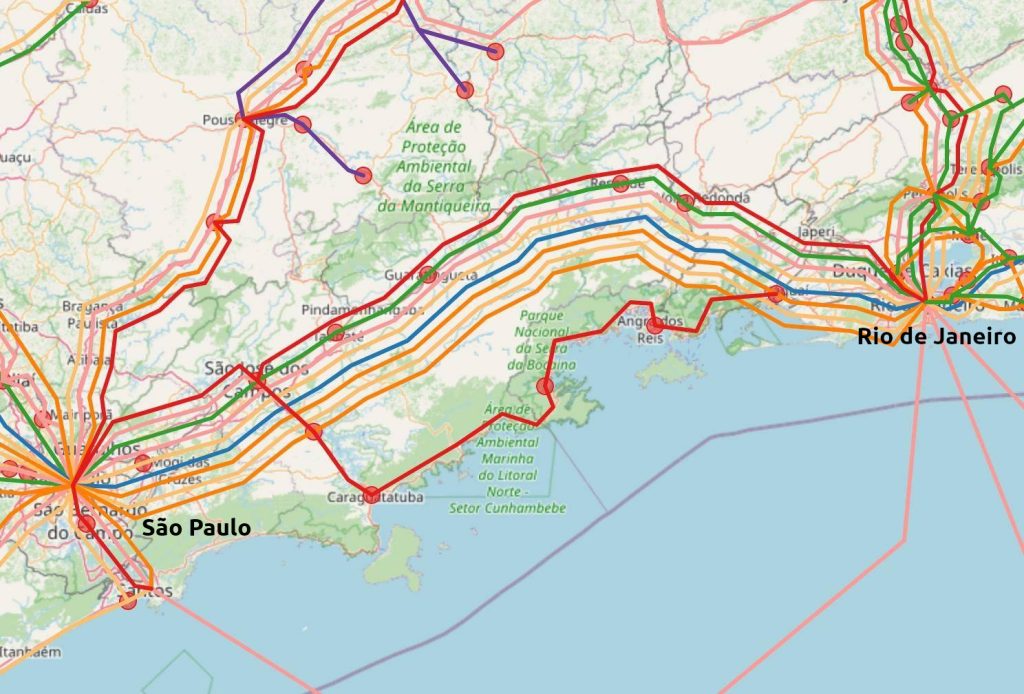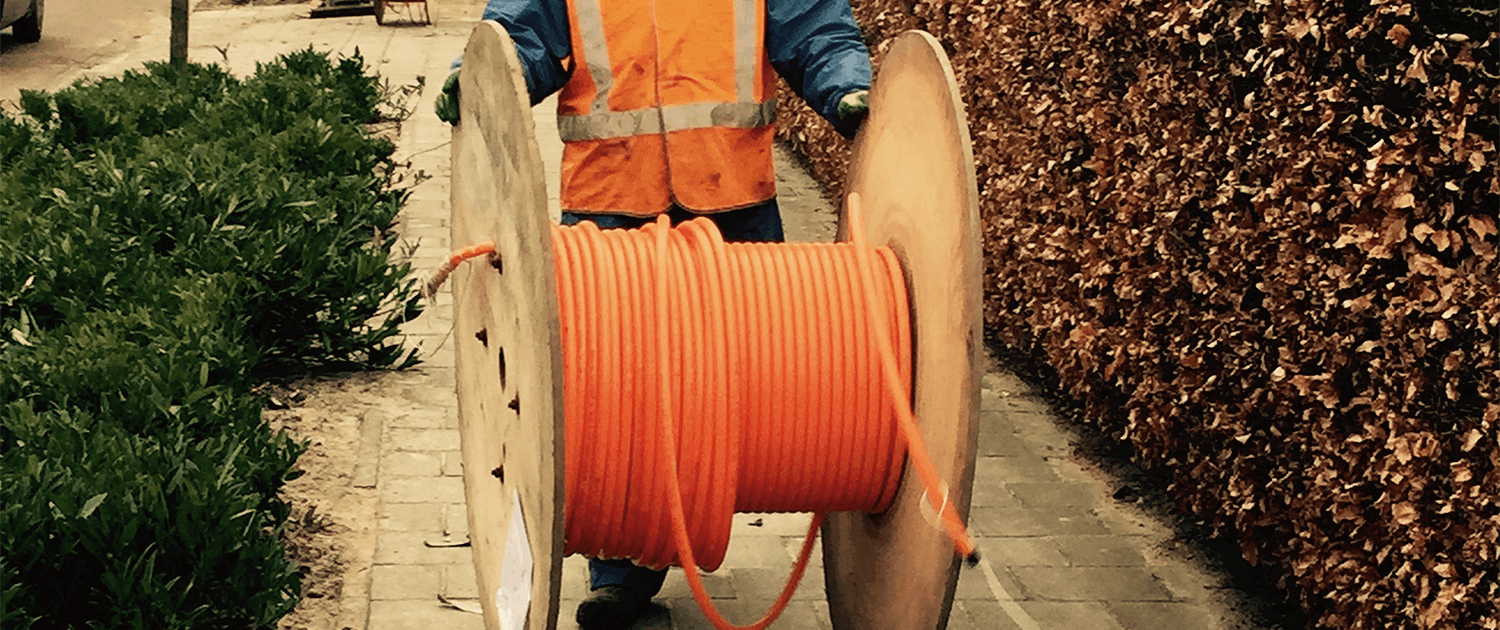Fiber optic networks are the foundation of the modern Internet, offering greater communication capacity than any other access technology. Therefore, understanding the range, extent, and resiliency of fiber optic infrastructure, particularly at the junctions where fiber networks overlap or connect, is essential to forming a holistic picture of evolving Internet infrastructure.
A common standard for describing fiber infrastructure makes it easier to miscalculate or understand its extent. For example, Liquid Intelligent Technologies operates one of the largest fiber optic networks on the African continent, with fiber spanning from Cape Town to Cairo. Their network infrastructure in Tanzania (Figure 1) is not physically theirs but represents the long-term broadband capacity they have leased from the Tanzanian government’s National ICT Broadband Backbone (NICTBB).

It is perfectly normal for operators to list leased capacity or ‘dark fiber’ on someone else’s network as part of their infrastructure. Yet, someone looking at the NICTBB and Liquid’s maps might conclude that this represents two backbone networks in the country.
On busy routes, the issue is even more dramatic. Figure 2 represents aggregated data on fiber networks collected by the Brazilian regulator. From this, it appears there are nine fiber networks connecting São Paulo and Rio de Janeiro. But in reality, there are likely three or four operators, with other operators purchasing capacity or dark fiber from the actual cable owners.
This becomes a very challenging question to answer without a shared, descriptive framework, a question that has implications for understanding the overall resiliency of national network infrastructure. When it comes to fiber optic networks, resiliency lies in the ability of a network to fail gracefully, seamlessly shifting traffic to other networks. Understanding the interplay of heterogeneous fiber networks is critical to understanding resiliency.

How is Work on the Standard Evolving?
The Open FiberFibre Data Standard (OFDS) is an open data, open standards initiative providing a standardized way of describing terrestrial fiber optic networks designed to enable effective information sharing and aggregation among telecommunication regulators and operators.
Read: A Standard to Increase Availability, Accessibility of Terrestrial Fiber Infrastructure Data
OFDS builds on the tradition of and lessons learned from important transparency initiatives such as Open Corporates and the International Aid Transparency Initiative.
The first half of 2023 saw the initial technical development phase of the standard come to a close. By the end of June, OFDS was a well-documented, robust open data standard for describing fiber networks and accompanying tools for validating data resources.
Even as this work closed, outreach began with communication regulators and fiber optic network operators.
In Q2, workshops were carried out in both Kenya and Ghana. In each country, one workshop was conducted with the local network operators association and another with the communications regulator. Responses from both regulators and operators were very positive.
The value of Open Standards for describing fiber networks and the principle of Open Data resources was immediately evident to all. However, the issue of just how much of the resulting data should be made available publicly versus shared privately, either among operators or with the regulator, was a point of lively debate.
Recognizing the value of OFDS from an investor’s perspective, the World Bank has set aside support for implementing OFDS in the East African region.
Moving on from national workshops, Mozilla partnered with the African Advanced Level Telecommunications Institute (AFRALTI) in Nairobi to conduct a regional OFDS workshop. AFRALTI is an ITU Centre of Excellence and is well-placed to carry out capacity-building on OFDS in the region.
What’s Next?
An essential complement to the development of the standard has been the need for software tools that can help regulators and operators extract insights that would otherwise have been impossible without OFDS. The key is combining heterogeneous OFDS datasets from multiple operators and determining where independent networks are versus where two or more operators share the same infrastructure. With this information, regulators and policymakers can accurately assess the true extent and resiliency of their fiber optic networks.
Towards that end, Mozilla has now contracted with the Open Data Services Cooperative to develop tools that enable users of OFDS data to compile and make sense of multiple operator datasets. Beginning in December 2023, this contract will take six months to complete.
In terms of governance, priorities for 2024 include developing:
- A digital home for the standard and mechanisms to enable participation in technical and governance discussions and access to technical resources for those implementing the standard.
- A lightweight democratic governance mechanism for the OFDS standard ensures that those implementing it have a voice in its development and growth.
- More resources for regional outreach.
If you are interested in getting involved in the OFDS, please contact [email protected]
The OFDS initiative is supported by a consortium of organizations, including the Internet Society, Mozilla, the World Bank, the International Telecommunications Union, Liquid Intelligent Technologies, CSquared, and Digital Council Africa.
Steve Song is a policy advisor with the Mozilla Corporation and a consultant on telecommunications policy & regulation to the Association for Progressive Communications (APC).


